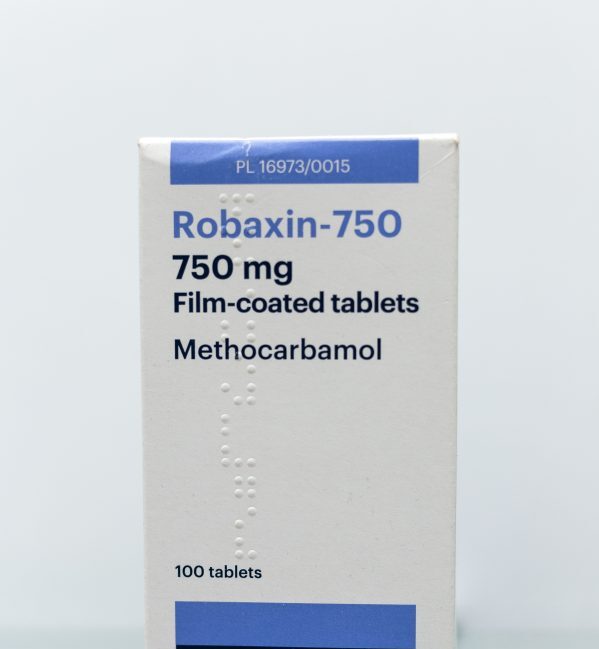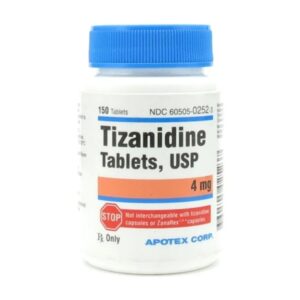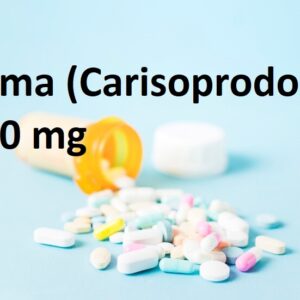Methocarbamol, commonly known by its brand name Robaxin, is a muscle relaxant used to alleviate discomfort and pain caused by acute skeletal muscle conditions. The 750 mg dosage is a common strength prescribed by healthcare professionals for its therapeutic effects. In this comprehensive exploration, we delve into the uses, mechanisms, dosage, potential side effects, and considerations associated with Methocarbamol 750 mg.
Uses and Indications:
Methocarbamol is primarily indicated for the relief of muscle spasms and associated pain, often arising from musculoskeletal conditions, injuries, or strains. The medication is frequently prescribed for short-term use to address acute discomfort rather than as a long-term solution.
Muscle spasms can occur due to various reasons, including injuries, overexertion, or underlying medical conditions affecting the musculoskeletal system. Methocarbamol is particularly beneficial in managing these spasms by acting centrally on the nervous system, effectively dampening nerve signals that contribute to muscle tension.
Mechanism of Action:
Methocarbamol’s mechanism of action is not fully understood, but it is believed to exert its muscle-relaxing effects by depressing the central nervous system. It is structurally related to guaifenesin, a common expectorant, but its muscle relaxant properties distinguish it for therapeutic use.
The medication is thought to act at the spinal cord level, inhibiting nerve impulses or signals that contribute to muscle spasms. By dampening these signals, Methocarbamol promotes muscle relaxation, alleviating pain and discomfort associated with tense or contracted muscles.
Dosage and Administration:
Methocarbamol is available in various strengths, with the 750 mg dosage being a common prescription. The typical dosage regimen involves taking Methocarbamol 750 mg orally every 4 to 6 hours, with or without food, as directed by a healthcare professional. Dosage adjustments may be made based on individual response and the severity of symptoms.
It is crucial for patients to adhere to the prescribed dosage and not exceed the recommended limits. Abruptly stopping the medication without proper guidance can lead to potential withdrawal symptoms, underscoring the importance of open communication between patients and healthcare providers.
Side Effects and Considerations:
As with any medication, Methocarbamol may be associated with certain side effects. Common side effects include drowsiness, dizziness, and lightheadedness. Individuals are advised to exercise caution while engaging in activities that require alertness, such as driving, until they understand how Methocarbamol affects them.
Additionally, Methocarbamol has the potential to interact with other medications. It is essential for individuals to inform their healthcare provider about all the medications, supplements, and herbs they are currently taking to avoid potential drug interactions.
While Methocarbamol is generally well-tolerated, certain individuals may be more susceptible to side effects. Those with a history of kidney disease should use Methocarbamol with caution, as the medication is primarily excreted by the kidneys. Adequate hydration is often recommended to minimize the risk of crystallization in the urine, which could lead to kidney stones.
Special Populations:
Pregnant and breastfeeding individuals should exercise caution when using Methocarbamol, and it is advisable to discuss potential risks and benefits with a healthcare provider. The safety of Methocarbamol in pediatric populations has not been well established, and its use in children should be carefully considered and monitored under the guidance of a healthcare professional.
Conclusion:
Methocarbamol (Robaxin) 750 mg is a valuable medication in the management of muscle spasms and associated pain. Its centrally acting muscle relaxant properties make it effective in providing relief from acute skeletal muscle conditions. The 750 mg strength, commonly prescribed by healthcare providers, allows for flexibility in dosing based on individual needs and response.
As with any medication, patients should use Methocarbamol under the guidance of a healthcare professional, strictly adhering to prescribed dosages. Understanding potential side effects, drug interactions, and considerations for special populations ensures safe and effective use. Open communication between patients and healthcare providers is paramount, fostering a collaborative approach to managing muscle-related discomfort and enhancing overall therapeutic outcomes.





Reviews
There are no reviews yet.